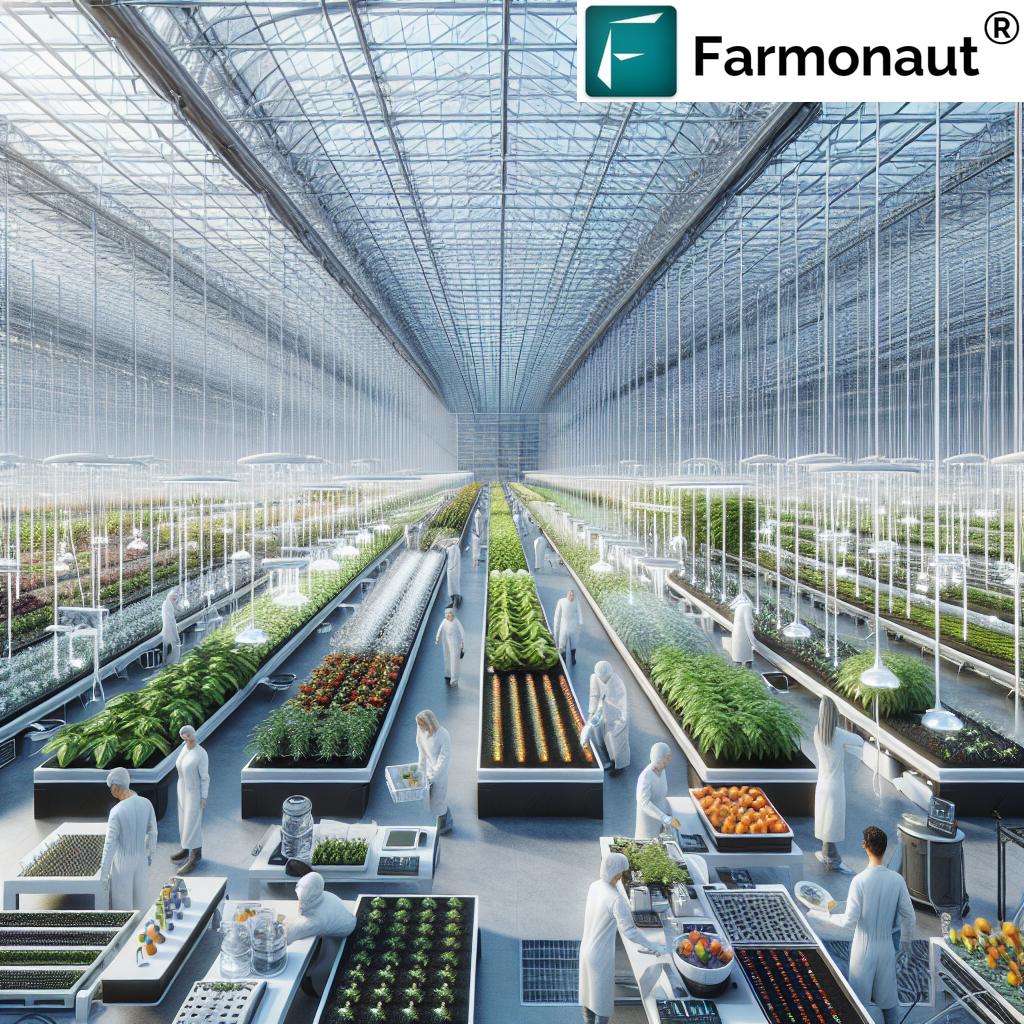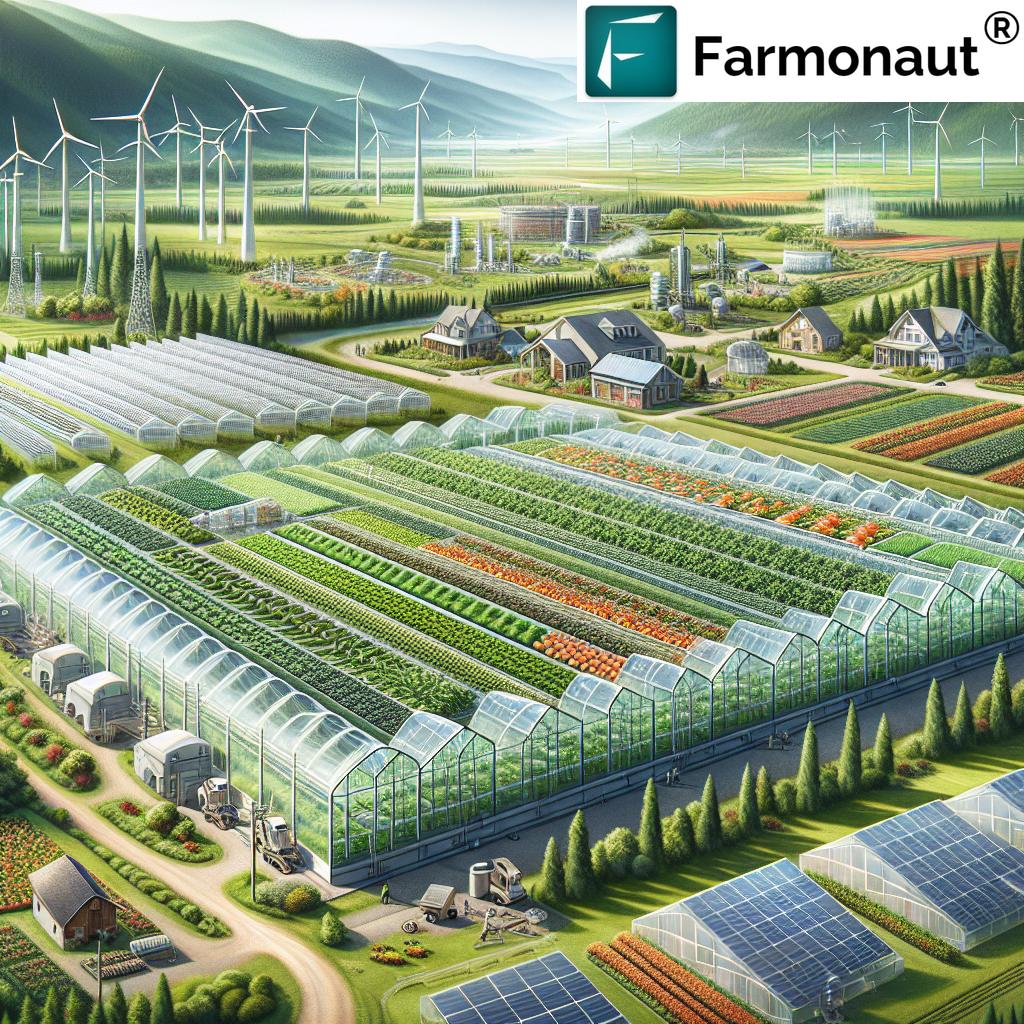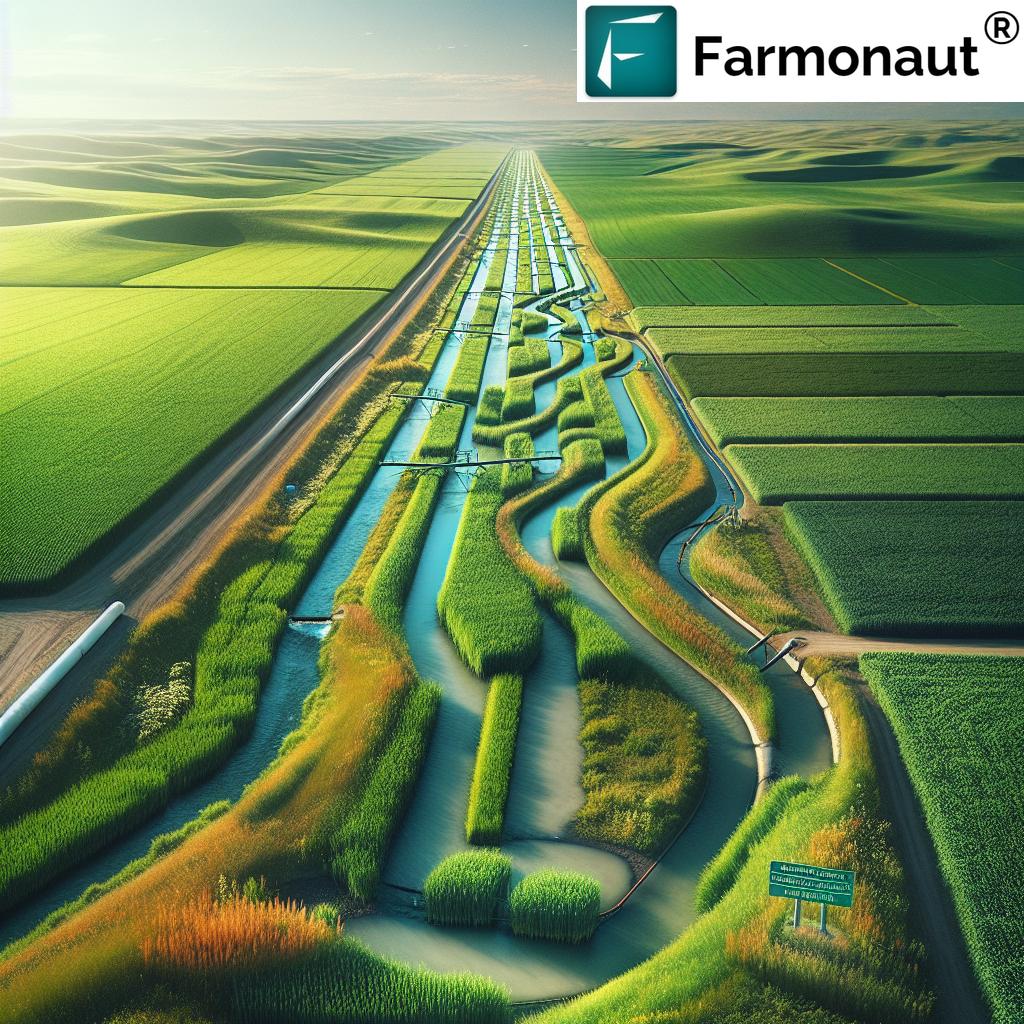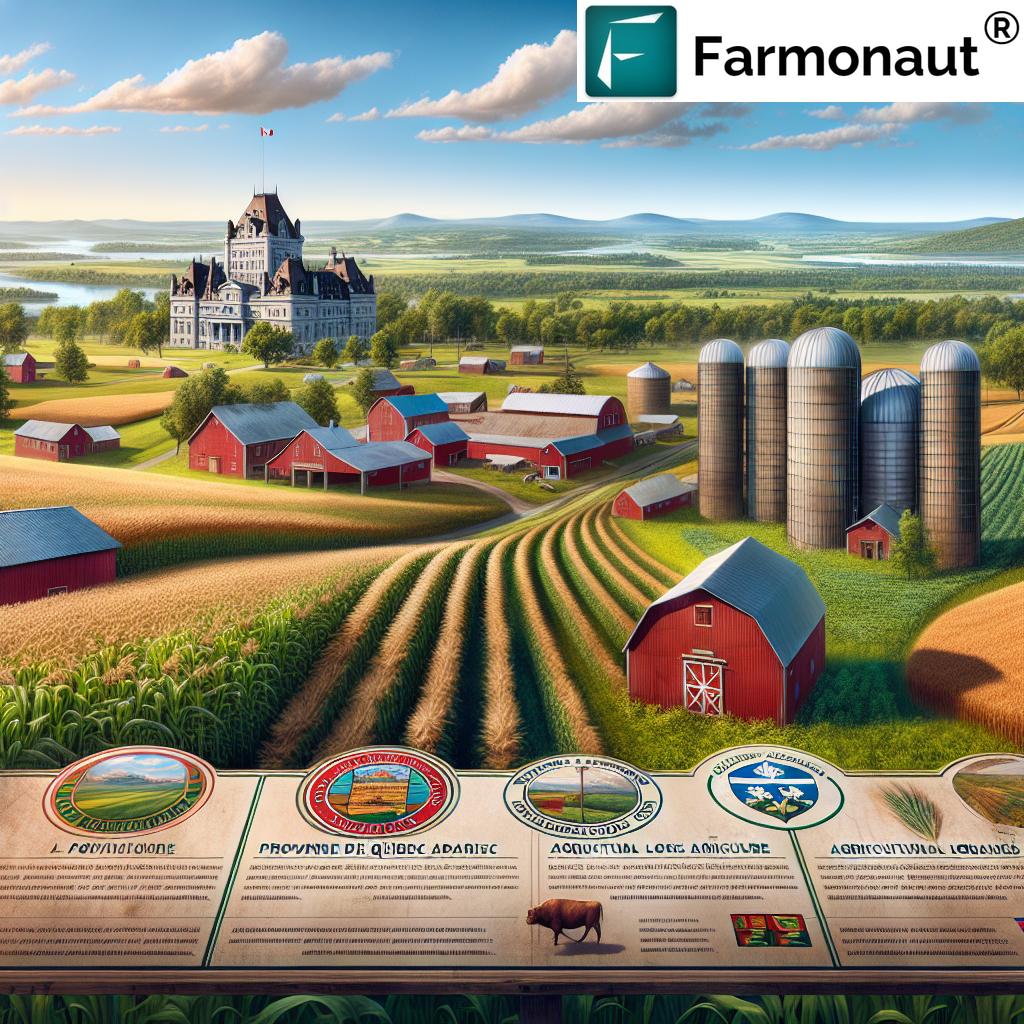Sustainable Farming Revolution: How Red Clover Boosts Crop Rotation and Soil Health in Ontario
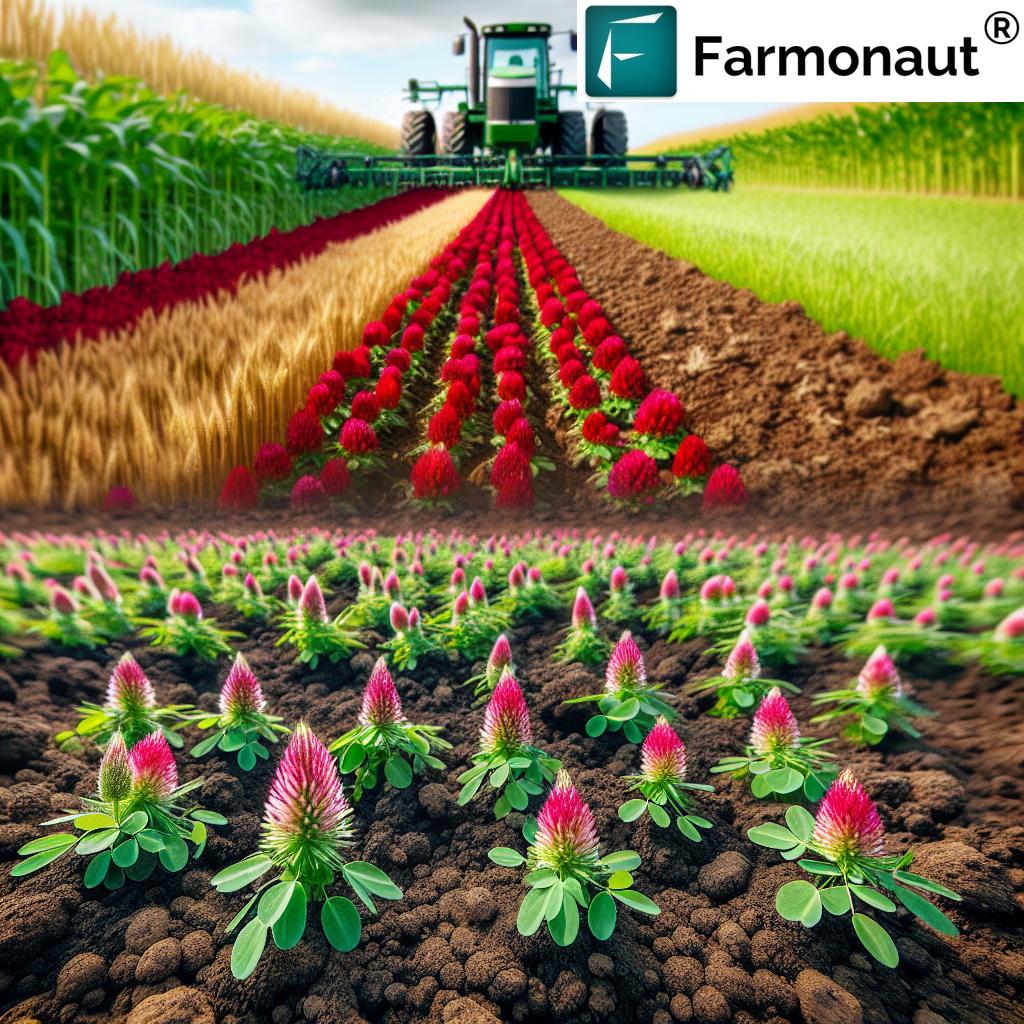
“Red clover can fix up to 150 kg of nitrogen per hectare annually, reducing fertilizer costs by 30-50% for farmers.”
In the heart of Ontario’s agricultural landscape, a quiet revolution is taking place. Farmers are increasingly turning to sustainable farming practices, with red clover emerging as a key player in this transformation. We at Farmonaut are excited to explore how this humble plant is reshaping crop rotation systems and boosting soil health across the province. As we delve into this topic, we’ll uncover the multifaceted benefits of incorporating red clover into agricultural operations and how it’s paving the way for a more sustainable future in farming.
The Rise of Sustainable Farming Practices in Ontario
Sustainable agriculture has become more than just a buzzword; it’s a necessity in today’s world of climate change and resource scarcity. Ontario farmers are at the forefront of this movement, adopting innovative techniques to ensure the longevity of their land and the quality of their produce. Among these practices, crop rotation with red clover stands out as a game-changer.
Let’s break down why sustainable farming practices are gaining traction:
- Environmental Conservation: Reducing the reliance on chemical inputs and promoting soil health.
- Economic Viability: Lowering production costs while maintaining or improving yields.
- Resource Efficiency: Optimizing the use of water, nutrients, and energy on the farm.
- Climate Resilience: Building farming systems that can withstand extreme weather events.
As we explore these practices, it’s important to note how technology is playing a crucial role. Farmonaut’s satellite-based crop health monitoring system, for instance, is helping farmers make informed decisions about their sustainable farming strategies. Our web application provides real-time insights into crop health, allowing farmers to fine-tune their approaches to sustainable agriculture.
Red Clover: The Unsung Hero of Crop Rotation
Red clover (Trifolium pratense) has been quietly revolutionizing farming practices in Ontario. This versatile legume is more than just a pretty flower; it’s a powerhouse of benefits for agricultural systems. Let’s dive into why red clover is becoming the go-to choice for farmers looking to enhance their crop rotation strategies:
- Nitrogen Fixation: Red clover has the remarkable ability to fix atmospheric nitrogen into the soil, reducing the need for synthetic fertilizers.
- Soil Structure Improvement: Its deep root system helps break up compacted soil, improving aeration and water infiltration.
- Erosion Control: As a cover crop, red clover protects the soil surface from wind and water erosion.
- Weed Suppression: Its dense growth can help suppress weeds, reducing the need for herbicides.
- Biodiversity Enhancement: Red clover supports pollinators and beneficial insects, contributing to a healthier farm ecosystem.
Incorporating red clover into crop rotation isn’t just about improving soil health; it’s about creating a more resilient and sustainable farming system. By using Farmonaut’s Android app, farmers can track the progress of their red clover cover crops and make data-driven decisions about their rotation strategies.
The Science Behind Red Clover’s Soil-Boosting Properties
To truly appreciate the impact of red clover on soil health, we need to delve into the science behind its beneficial properties. Red clover’s ability to improve soil quality is rooted in its biological characteristics and the symbiotic relationships it forms with soil microorganisms.
- Nitrogen Fixation Process: Red clover forms a symbiotic relationship with Rhizobium bacteria in its root nodules. These bacteria convert atmospheric nitrogen (N₂) into a form that plants can use (NH₃), effectively “fixing” nitrogen in the soil.
- Organic Matter Contribution: As red clover grows and dies back, it adds organic matter to the soil, improving its structure and water-holding capacity.
- Microbial Activity Enhancement: The presence of red clover stimulates soil microbial activity, leading to a more diverse and healthy soil ecosystem.
- Nutrient Cycling: Red clover’s deep root system helps bring nutrients from lower soil layers to the surface, making them available for subsequent crops.
Understanding these processes is crucial for farmers looking to maximize the benefits of red clover in their crop rotation systems. Farmonaut’s API can provide valuable data on soil conditions, helping farmers optimize their red clover integration strategies.
Implementing Red Clover in Crop Rotation: Best Practices
Successfully incorporating red clover into a crop rotation system requires careful planning and execution. Here are some best practices that Ontario farmers have found effective:
- Timing of Planting: Red clover is typically underseeded with a cereal crop like barley or wheat in early spring. This allows the clover to establish without competing with the main crop.
- Seeding Rate: A general recommendation is 6-8 kg/ha when underseeding, but rates may vary based on specific conditions.
- Soil Preparation: Ensure a firm seedbed for good seed-to-soil contact. No-till methods can be particularly effective.
- Fertility Management: While red clover fixes nitrogen, it may benefit from phosphorus and potassium applications, especially in deficient soils.
- Termination Timing: For maximum nitrogen benefit, allow red clover to grow until the following spring before terminating for the next crop.
Implementing these practices can significantly enhance the benefits of red clover in your crop rotation. Farmonaut’s iOS app can help you track field conditions and make informed decisions about your red clover management.
“Implementing red clover in crop rotation can increase subsequent crop yields by 10-20% due to improved soil health.”
The Economic Impact of Red Clover Integration
While the environmental benefits of red clover are clear, its economic impact is equally impressive. Ontario farmers who have integrated red clover into their crop rotations report significant cost savings and yield improvements:
- Reduced Fertilizer Costs: The nitrogen-fixing ability of red clover can lead to a 30-50% reduction in fertilizer expenses for subsequent crops.
- Improved Yields: Crops following red clover in rotation often see yield increases of 10-20% due to enhanced soil health and fertility.
- Diversified Income Streams: Red clover can be harvested for hay or silage, providing additional income or feed for livestock operations.
- Lower Pest Control Costs: The natural weed suppression and beneficial insect attraction of red clover can reduce the need for pesticides.
- Increased Land Value: Over time, the improved soil health resulting from red clover rotation can increase the overall value of farmland.
These economic benefits make red clover an attractive option for farmers looking to improve their bottom line while adopting sustainable practices. Farmonaut’s technology can help quantify these benefits by providing detailed crop health and yield estimates.
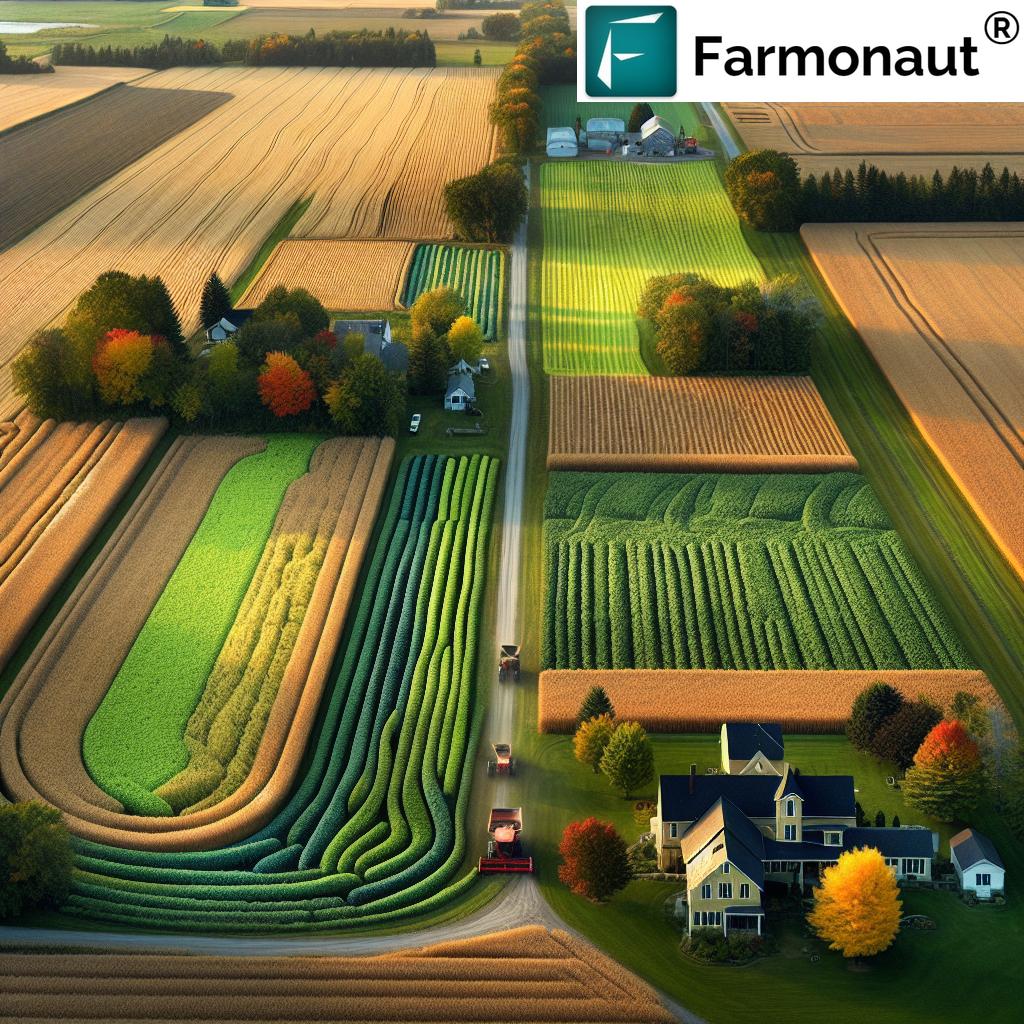
Overcoming Challenges in Red Clover Adoption
While the benefits of red clover are numerous, some farmers may face challenges when integrating it into their crop rotation systems. Here are some common hurdles and strategies to overcome them:
- Establishment Issues: Red clover can be sensitive to drought or excessive moisture during establishment. Using Farmonaut’s weather forecasting features can help plan optimal planting times.
- Management Complexity: Adding red clover to rotation requires careful planning and timing. Our crop monitoring tools can assist in tracking growth stages and determining ideal management practices.
- Pest and Disease Concerns: Like any crop, red clover can be susceptible to certain pests and diseases. Regular monitoring with our satellite imagery can help detect issues early.
- Equipment Needs: Some farmers may need to invest in new equipment for planting or terminating red clover. The long-term benefits often outweigh these initial costs.
- Market Considerations: For those harvesting red clover as a crop, finding markets can be challenging. Networking with local livestock producers or exploring value-added products can help.
By addressing these challenges head-on and utilizing technology like Farmonaut’s platform, farmers can successfully integrate red clover into their operations and reap the full benefits of this sustainable farming practice.
The Role of Technology in Optimizing Red Clover Rotation
As we embrace sustainable farming practices like red clover rotation, technology plays a crucial role in optimizing these systems. Farmonaut’s suite of tools offers several advantages for farmers implementing red clover in their crop rotations:
- Satellite-Based Crop Monitoring: Our advanced satellite imagery allows farmers to track the growth and health of red clover stands in real-time, ensuring optimal development.
- AI-Powered Advisory: The Jeevn AI system provides personalized recommendations for managing red clover based on soil conditions, weather patterns, and crop health data.
- Precision Agriculture Tools: Our platform enables precise application of inputs, helping farmers maximize the benefits of red clover while minimizing resource use.
- Data-Driven Decision Making: By analyzing historical and current data, farmers can make informed decisions about when to plant, terminate, and rotate red clover for maximum benefit.
Leveraging these technological solutions can significantly enhance the success of red clover integration in crop rotation systems. For more information on how to use our tools for sustainable farming practices, visit our API Developer Docs.
The Future of Sustainable Farming with Red Clover
As we look to the future of agriculture in Ontario and beyond, the role of red clover in sustainable farming practices is set to grow. Here are some trends and developments we anticipate:
- Increased Adoption: As more farmers experience the benefits of red clover rotation, we expect to see wider adoption across diverse farming operations.
- Research and Development: Ongoing research into red clover varieties and management practices will likely lead to even greater benefits and easier integration into farming systems.
- Policy Support: Government initiatives supporting sustainable agriculture may provide incentives for farmers to adopt practices like red clover rotation.
- Consumer Demand: Growing consumer interest in sustainably produced food could drive market demand for crops grown using red clover rotation systems.
- Technological Integration: Advancements in agricultural technology, including those offered by Farmonaut, will continue to enhance the efficiency and effectiveness of red clover management.
The future of sustainable farming looks bright, with red clover playing a starring role in crop rotation strategies. By combining traditional wisdom with cutting-edge technology, we can create more resilient, productive, and environmentally friendly agricultural systems.
Comparative Analysis: Traditional Rotation vs. Red Clover Rotation
To fully appreciate the impact of red clover in crop rotation, let’s compare traditional rotation systems with those incorporating red clover:
| Aspect | Traditional Rotation | Rotation with Red Clover |
|---|---|---|
| Soil Health | Moderate improvement | Significant improvement in structure and organic matter |
| Nitrogen Fixation | Limited or none | Up to 150 kg/ha annually |
| Erosion Control | Variable, depends on cover crop use | Excellent, year-round soil coverage |
| Fertilizer Costs | High annual expenses | Estimated 30-50% reduction in costs |
| Crop Yield | Baseline yields | 10-20% increase in subsequent crops |
| Biodiversity | Limited | Enhanced, supports pollinators and beneficial insects |
| Weed Management | Reliant on herbicides | Natural suppression, reduced herbicide need |
This comparison clearly illustrates the numerous advantages of incorporating red clover into crop rotation systems. The benefits extend beyond just soil health, impacting the overall sustainability and profitability of farming operations.
Implementing Red Clover: A Step-by-Step Guide
For farmers looking to integrate red clover into their crop rotation, here’s a comprehensive guide to get started:
- Soil Assessment: Conduct a thorough soil test to determine pH and nutrient levels. Red clover thrives in soil with a pH between 6.0 and 7.0.
- Choose the Right Variety: Select a red clover variety suited to your climate and intended use (forage, green manure, etc.).
- Plan Your Rotation: Decide where red clover fits best in your existing rotation. It’s often planted after cereals and before corn or other high-nitrogen-demanding crops.
- Prepare the Seedbed: Ensure a firm, level seedbed for good seed-to-soil contact. No-till methods can also be effective.
- Seed at the Right Time: In Ontario, spring seeding (April-May) or late summer seeding (August) works best.
- Monitor Growth: Use Farmonaut’s satellite monitoring to track the establishment and growth of your red clover stand.
- Manage the Stand: If using for forage, cut at appropriate times. For green manure, allow full growth before termination.
- Terminate Effectively: Timing is crucial. Terminate in late fall or early spring before the next crop, depending on your rotation plan.
- Evaluate and Adjust: Keep detailed records of your experiences and results to refine your approach in subsequent seasons.
By following these steps and utilizing Farmonaut’s technology, you can successfully integrate red clover into your farming operation and start reaping the benefits of this sustainable practice.
Maximizing the Benefits of Red Clover with Farmonaut
At Farmonaut, we’re committed to helping farmers make the most of sustainable practices like red clover rotation. Our platform offers several features specifically designed to optimize the use of cover crops and improve overall farm management:
- Satellite-Based Vegetation Monitoring: Track the health and growth of your red clover stands with our NDVI (Normalized Difference Vegetation Index) imagery.
- Weather Forecasting: Plan your planting and termination dates with accurate, field-specific weather predictions.
- Soil Moisture Analysis: Ensure optimal growth conditions by monitoring soil moisture levels throughout the season.
- Crop Rotation Planning Tools: Use our digital tools to plan and optimize your crop rotation strategies, including red clover integration.
- Yield Estimation: Predict the impact of red clover on your subsequent crop yields using our AI-powered analytics.
By leveraging these tools, you can make data-driven decisions that maximize the benefits of red clover in your farming operation. Our platform is designed to be user-friendly and accessible, ensuring that farmers of all technical backgrounds can take advantage of these advanced features.
Frequently Asked Questions
Q: How long should red clover be left in a rotation?
A: Red clover is typically left for one to two years in a rotation. This allows for maximum nitrogen fixation and soil improvement benefits.
Q: Can red clover be grazed by livestock?
A: Yes, red clover makes excellent pasture for livestock. However, care should be taken to avoid bloat in cattle and sheep.
Q: Does red clover work well in no-till systems?
A: Red clover can be successfully integrated into no-till systems. It’s often frost-seeded or drilled into standing crops.
Q: How does red clover compare to other cover crops?
A: Red clover offers a unique combination of nitrogen fixation, soil improvement, and potential forage use. It’s particularly well-suited for cooler climates like Ontario.
Q: Are there any crops that shouldn’t follow red clover in rotation?
A: While most crops benefit from following red clover, some legumes (like soybeans) may not see as much benefit due to their own nitrogen-fixing abilities.
Conclusion: Embracing Sustainable Agriculture with Red Clover
As we’ve explored throughout this article, red clover represents a powerful tool in the sustainable farmer’s toolkit. Its ability to improve soil health, fix nitrogen, control erosion, and boost subsequent crop yields makes it an invaluable component of modern crop rotation systems in Ontario and beyond.
By embracing red clover and other sustainable farming practices, we’re not just improving our farms today; we’re securing a more resilient and productive agricultural future. The integration of traditional wisdom with cutting-edge technology, as offered by Farmonaut, allows farmers to maximize the benefits of these practices while navigating the challenges of modern agriculture.
We encourage all farmers to consider the role red clover could play in their operations. Whether you’re looking to reduce fertilizer costs, improve soil health, or diversify your crop rotation, red clover offers a sustainable solution with proven benefits.
As we move forward, let’s continue to innovate, collaborate, and learn from each other. The future of farming is sustainable, and with tools like red clover and technologies like Farmonaut, we’re well-equipped to meet the challenges and opportunities that lie ahead.
Ready to take your sustainable farming practices to the next level? Explore Farmonaut’s suite of tools and start optimizing your crop rotation strategy today.





